By Amanda Rose Newton
Summer in Central Florida brings a lot of things: sizzling temps, afternoon storms, and, if you’ve glanced at your patio lately, a whole lot of lizards. If you’ve ever wondered whether these quick little critters are pests or if they are going to start snacking on your favorite plants, you’re not alone.
Let’s untangle fact from fiction and talk about the lizards you see, what they are up to, and how to peacefully coexist in your garden.
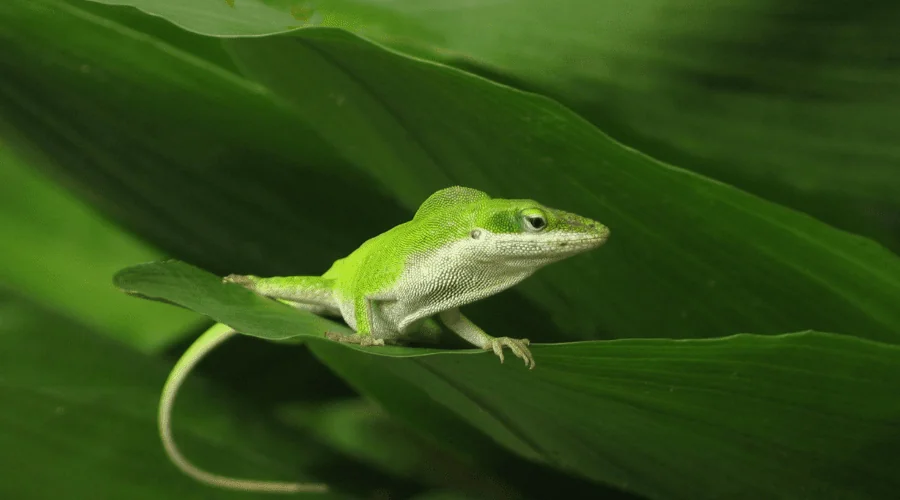
Meet the Most Common Visitor: The Brown Anole
The lizards most of us see darting across sidewalks, screen enclosures, and garden beds are brown anoles (Anolis sagrei). These are invasive lizards that originally hail from the Caribbean and have made themselves very much at home in Florida. Unlike our native green anole (Anolis carolinensis), the brown anoles have spread rapidly across the state, often outcompeting their greener cousins.
The green anole, by contrast, is Florida’s only native anole and has been slowly pushed higher up into trees and shrubs by its brown competitor. If you spot one of these bright green beauties, count yourself lucky; they are becoming harder to find in urban areas.
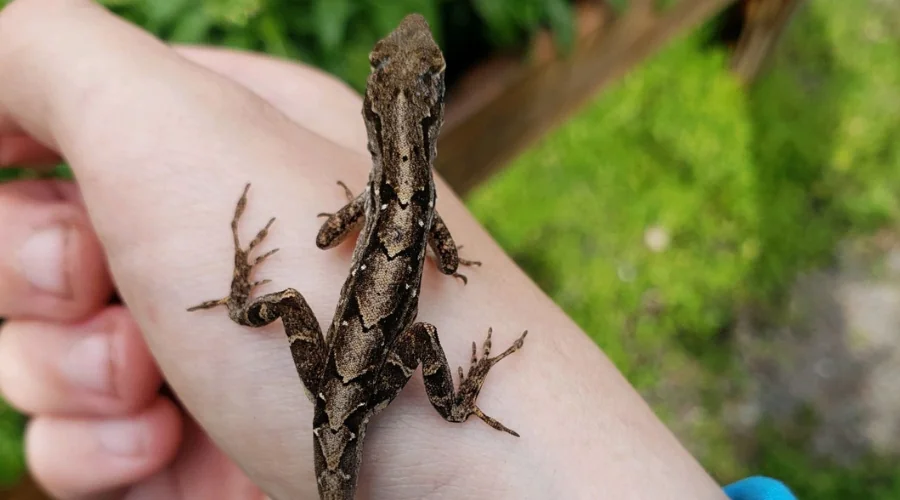
Do Lizards Harm Your Plants?
The short answer: not really.
Lizards like the brown and green anoles are insectivores, meaning their diet consists of:
- Gnats
- Flies
- Small spiders
- Ants
- Mosquitoes (yes, really!)
- Caterpillars
- Other small bugs
They do not eat plants, dig up roots, or nest in a way that’s harmful to your landscape. So if you’re seeing lizards hopping across your flowers, they are probably just chasing lunch, not making a meal of your begonias.
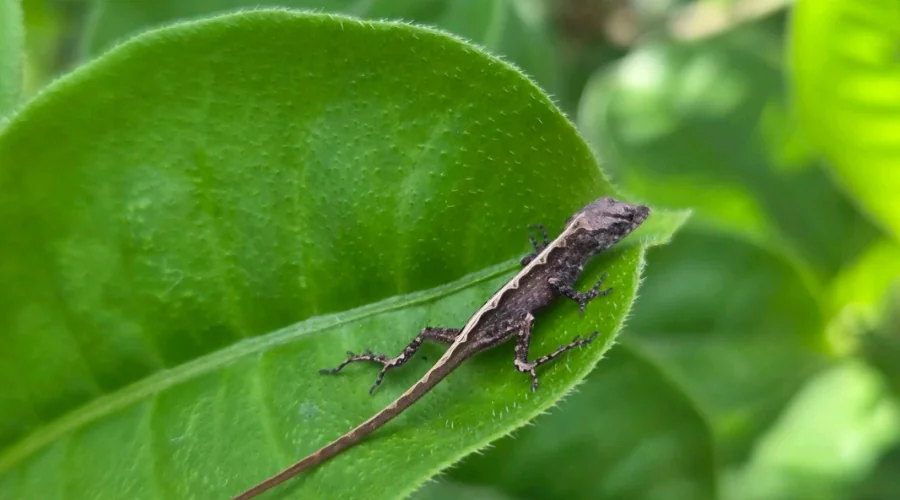
What About Droppings or Too Many Lizards?
While lizard droppings (often black with a white tip) can occasionally collect on patios or ledges, they don’t carry the same health concerns as rodents or pest insects. And while seeing dozens of them might be a little unsettling, keep in mind, they are harmless and actually doing free pest control on your behalf.
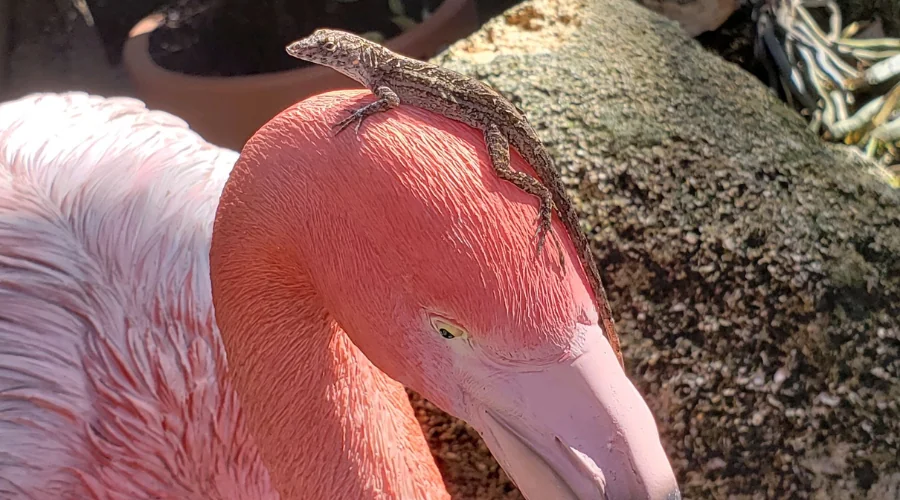
How to Coexist (or Deter, Gently)
If you still want to reduce lizard presence around certain areas of your home or garden, here are a few gentle, non-lethal options:
Trim Overgrown Plants
Lizards like cover. By thinning out dense foliage around walkways and doors, you make the area less appealing.
Keep Your Porch or Garden Tidy
Fewer hiding places, like piles of leaves or old pots, mean fewer lizards taking up residence.
Use Natural Repellents
While not a scientific fact, peppermint oil sprays or coffee grounds may help deter lizards from specific areas, like patio furniture or planters.
Invite Birds (Carefully)
Birds like blue jays and mockingbirds occasionally prey on lizards, so creating a bird-friendly garden may help keep the population balanced. Just be mindful of your lizards and pollinators.
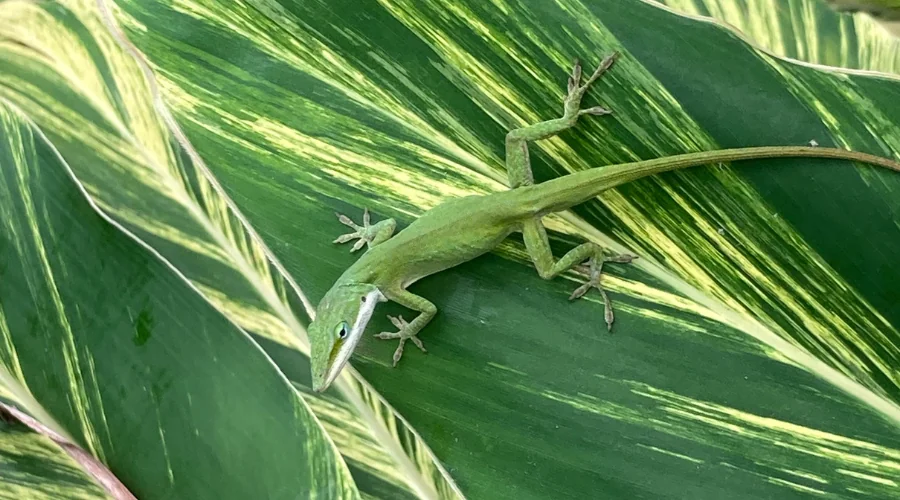
New Lizards on the Block?
In addition to brown anoles, Florida gardeners may also spot:
- Cuban knight anoles (large, green, and mostly in South FL)
- Geckos, especially around lights at night
- Skinks, sleek little ground dwellers with blue tails when young
These newcomers are also part of Florida’s ever-changing wildlife scene, and while not all are native, they usually aren’t a direct threat to your plants either.
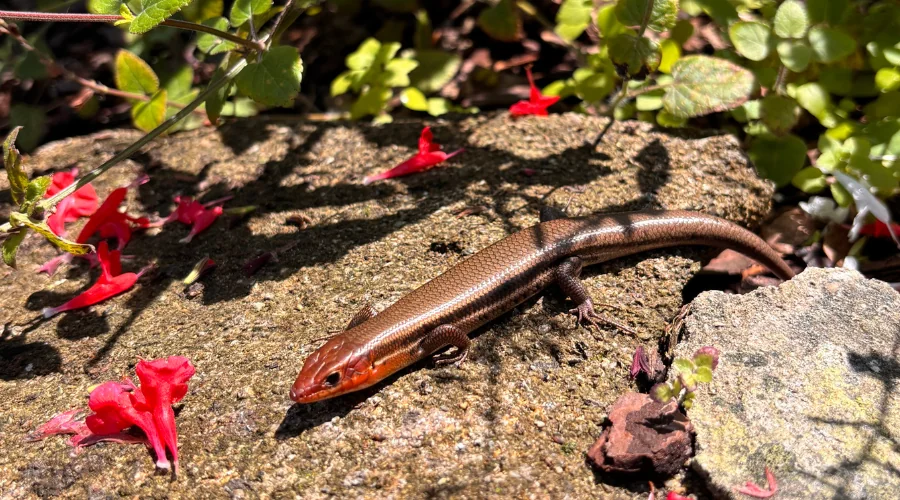
In most cases, lizards in your garden are not pests; they are pest managers. They are here because your garden is full of life, which is a good sign! Unless they are getting into indoor spaces or making you uncomfortable, they are best left alone to do their job.
So next time you see a brown anole basking on your windowsill, give them a nod. They’re probably just taking a break after catching some bugs, so you don’t have to.


